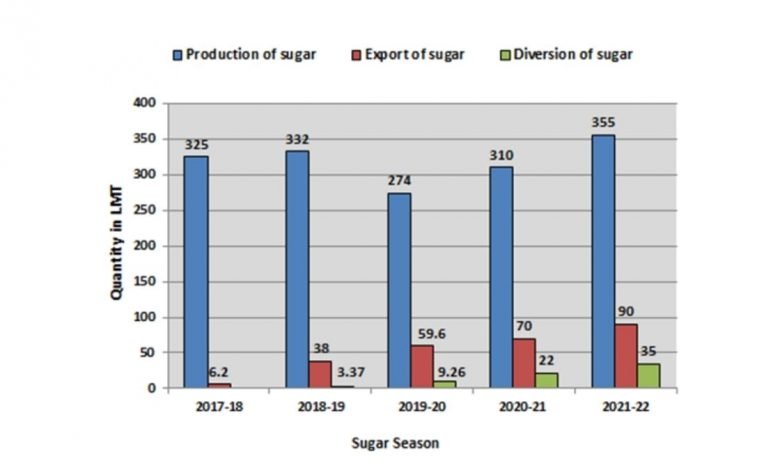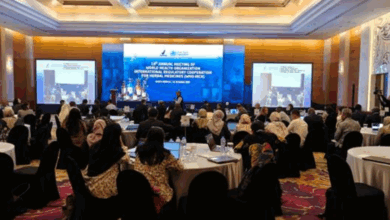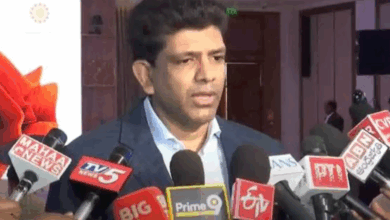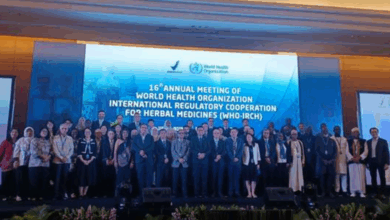Export of sugar in sugar season 2021-22 is 15 times that of 2017-18

Ethanol production capacities increased from 421 cr ltrs to 867 cr ltrs in the last 8 years
Export of sugar in current sugar season 2021-22 is 15 times of export as compared to export in sugar season 2017-18. The major importing countries are Indonesia, Afghanistan, Sri Lanka, Bangladesh, UAE, Malaysia and African Countries.
In sugar seasons 2017-18, 2018-19 & 2019-20, about 6.2 LMT, 38 LMT & 59.60 LMT of sugar was exported. In sugar season 2020-21 against a target of 60 LMT about 70 LMT have been exported. About Rs 14,456 Cr was released to sugar mills in past 5 years to facilitate the export of sugar & Rs. 2000 cr as carrying cost for maintaining buffer stock. Since the international prices of sugar are on uptrend & stable, so, contracts for export of about 90 LMT have been signed to export sugar in the current sugar season 2021-22 & that too without the announcement of any export subsidy; out of which 75 LMT have been exported till 18.05.2022.
In order to find a permanent solution to address the problem of excess sugar, the Government is encouraging sugar mills to divert excess sugarcane to ethanol. With the vision to boost the agricultural economy, reduce dependence on imported fossil fuels, save foreign exchange on account of crude oil import bills & reduce the air pollution, the Government has fixed a target of 10% blending of fuel-grade ethanol with petrol by 2022 & 20% blending by 2025.
Till the year 2014, the ethanol distillation capacity of molasses-based distilleries was only about 215 cr litres. However, in the past 8 years due to the policy changes made by the Government, the capacity of molasses-based distilleries has been increased to 569 cr litres. The capacity of grain-based distilleries which was 206 cr ltrs in 2014 has increased to 298 cr ltrs. Thus, the total ethanol production capacities have increased from 421 cr ltrs to 867 cr ltrs in just 8 years.
The supply of ethanol to OMCs was only 38 crore litres with blending levels of only 1.53 % in ethanol supply year (ESY) 2013-14. Production of fuel-grade ethanol and its supply to OMCs has increased by 8 times from 2013-14 to 2020-21. In ethanol supply year 2020-21 (December – November), about 302.30 cr ltrs of ethanol has been supplied to OMCs thereby, achieving 8.1% blending levels, which is historically the highest.
In the current ESY 2021-22, about 186 cr ltrs ethanol has been blended with petrol till 08.05.2022 thereby achieving 9.90% blending. It is expected that in the current ethanol supply year 2021-22, we will be achieving the 10% blending target.
With a view to supporting the sugar sector and in the interest of sugarcane farmers, the Government has also allowed the production of ethanol from B-Heavy Molasses, sugarcane juice, sugar syrup and sugar. The government has been fixing the remunerative ex-mill price of ethanol derived from C-heavy & B-heavy molasses & ethanol derived from sugarcane juice/ sugar/ sugar syrup for ethanol season to encourage mills to divert excess sugarcane to ethanol.
In sugar seasons 2018-19, 2019-20 & 2020-21 about 3.37, 9.26 & 22 LMT of sugar was diverted to ethanol. In sugar season 2021-22, it is likely that about 35 LMT of excess sugar would be diverted to ethanol. By 2025, it is targeted to divert more than 60 LMT of excess sugar to ethanol, which would solve the problem of high inventories of sugar, and improve the liquidity of mills thereby helping in the timely payment of cane dues of farmers.
In 2014, more than Rs. 64,000 Crore revenue generated by sugar mills & distilleries from the sale of ethanol to OMCs
Since 2014 more than Rs. 64,000 cr revenue has been generated by sugar mills & distilleries from the sale of ethanol to OMCs which has helped in making timely payment of dues of farmers.
In sugar season 2013-14, the Fair & Remunerative Price (FRP) of sugarcane was at Rs. 210/ QTL at 9.5 % recovery. With a view to increasing the income of sugarcane farmers, the Government has increased the FRP of sugarcane from time to time in the past 8 years & has revised it to Rs. 290/ QTL for sugar season 2021-22 at 10% recovery (which translates to Rs. 275.50 / QTL at 9.5 % recovery), which is 31% higher than the FRP of sugar season 2013-14. In sugar season 2020-21, sugarcane worth Rs. 93,000 cr was purchased by mills. In the sugar season 2021-22, sugarcane worth Rs. 1,10,000 crore is likely to be purchased by sugar mills which are at an all-time high level & is the second highest next to the procurement of paddy crop at Minimum Support Price.
Prior to 2014, there was always a delay in payment of cane dues of farmers & maximum percentage of cane arrears were carried forward to subsequent seasons; but due to constructive policies of the present Govt., the fundamentals & liquidity of sugar mills have improved due to which now timely payment of cane dues are being made by sugar mills to sugar cane farmers. About 99% of cane dues upto sugar seasons 2019-20 have been cleared. Even for the sugar season 2020-21, out of total cane dues payable of Rs. 92938 cr, about Rs. 92549 cr have been paid & only Rs. 389 cr are pending as of 17.05.2022; thus 99.50% of cane dues have been cleared.
For the current sugar season 2021-22, out of total cane dues payable of Rs. 1,06,849 cr, about Rs. 89,553 cr have been paid & only Rs. 17,296 cr are pending as of 17.05.2022; thus 84% of cane dues have been paid. The domestic ex-mill prices of sugar are also now stable & are in the range of Rs. 32 -35/ kg which would enable sugar mills to make timely payment of cane dues to farmers in the current sugar season 2021-22. The average retail price of sugar in the country is about Rs. 41.50/ kg & is likely to remain in the range of Rs. 40-43/ kg in the coming months which is not a cause of worry.
To increase the production of fuel-grade ethanol, Govt. is also encouraging distilleries to produce ethanol from maize & rice available with FCI. The government has fixed the remunerative price of ethanol from maize & FCI rice.
To achieve blending targets, the Government is encouraging sugar mills and distilleries to enhance their distillation capacities for which the Government is facilitating them to avail loans from banks for which interest subvention @ 6% or 50% of the interest charged by the banks whichever is lower is being borne by Government. This will bring an investment of about Rs. 41,000 crores. DFPD has also opened a window for 6 months w.e.f 22.04.2022 for inviting applications from Project Proponents for enhancement of their existing ethanol distillation capacity or to set up a new distillery for producing 1st Generation (1G) ethanol from feedstocks such as cereals (rice, wheat, barley, corn & sorghum), sugarcane (including sugar, sugar syrup, sugarcane juice, B-heavy molasses, C-heavy molasses), sugar beet etc.
As a result of these measures, it is likely that ethanol distillation capacities in the country would be doubled by 2025, which would ensure the achievement of the 20 % blending target. It will address the problem of surplus sugar & ensure timely payment of cane dues of farmers.
Due to various steps taken by the Government in the past few years, the fundamentals of sugar mills have improved & sugar industry has become self-sustainable which has resulted in top-line & bottom-line growth of the sugar companies, which is reflected in the share prices of the listed companies which have increased 4 to 5 times in the past couple of years.
With a view to increasing the income of sugarcane farmers, the Government has increased the FRP of sugarcane by 31% in the past 8 years
Impact on country’s economy due to 20% blending by 2025.
- It would benefit maize & paddy farmers, and would address the surplus grain problem; about 165 lakh tons of grains will be utilized.
- Diversion of 60 lakh tons of surplus sugar would address the problem of surplus sugar, check depressed sale of sugar improve the liquidity of sugar mills and will ensure timely payment of cane dues of farmers
- It will bring new investment opportunities at about Rs. 41,000 crore would be invested to set up new distilleries in rural areas & would result in job creation in villages.
- Would improve air quality, and reduces Carbon Monoxide emission by 30-50% & Hydrocarbon by 20%.
- Would save foreign exchange of more than Rs. 40,000 cr on account of crude oil import bill and would reduce dependence on imported fossil fuel thereby would help in achieving the goal of Atmanirbhar Bharat in the petroleum sector.
In normal Sugar Season (October- September), the production of sugar is around 340-350 Lakh Metric Tonne (LMT) as against the domestic consumption of 270-280 LMT which results in huge carry overstock of sugar with mills. Due to excess availability of sugar in the country, the ex-mill prices of sugar remain subdued & even fell around Rs. 24-26 / kg which was even below the cost of production of sugar resulting in cash loss to sugar mills. This excess stock of 70 LMT also leads to blockage of funds & affects the liquidity of sugar mills resulting in the accumulation of cane price arrears.
In a view to preventing cash loss to sugar mills caused due to subdued sugar prices, the Government in June 2018 introduced the concept of Minimum Selling Price (MSP) of sugar & fixed the MSP of sugar at Rs. 29/ kg which was revised to Rs. 31/ kg w.e.f 14.02.2019.
Further, to liquidate excess stocks and to improve the liquidity position of sugar mills enabling them to make timely payment of cane dues of farmers, the Government has taken various short term interventions from time to time in the past 8 years viz. providing assistance to sugar mills to offset the cost of cane, extended financial assistance to sugar mills for maintenance of buffer stocks, extended financial assistance to sugar mills to facilitate the export of sugar, extended soft loans to sugar mills, etc.
Disclaimer : This is an official press release by PIB.







